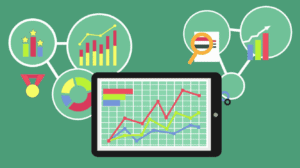What Is A SEO On-Page?
Search engine optimization (SEO) is the practice of optimizing your website to improve its visibility and ranking in search engine results pages (SERPs). One of the key components of SEO is on-page optimization, which involves optimizing the content and structure of your website’s individual pages to make them more search engine-friendly. Here’s a closer look at what on-page SEO is and how it works.
(Looking for”Effective SEO Services“? Contact us Today!)

On-page SEO refers to the techniques and strategies used to optimize individual web pages to rank higher in search engine results pages and drive more relevant traffic to your website. This includes optimizing the content, HTML source code, meta tags, and images on each page.
Here are some of the key elements of on-page SEO:
- Keyword research: Keyword research is the process of identifying the most relevant and profitable keywords for your website. These keywords are used throughout your website to help search engines understand the topic and relevance of your content.
- Title tags: The title tag is the text that appears at the top of a web page and in search engine results pages. It should be concise, descriptive, and include your primary keyword.
- Meta description: The meta description is the snippet of text that appears below the title tag in search engine results pages. It should be a brief summary of the content on the page and include relevant keywords.
- Header tags: Header tags (H1, H2, H3, etc.) are used to structure the content on your page and make it easier for search engines to understand the hierarchy and importance of the content.
- Content optimization: Content optimization involves creating high-quality, relevant, and engaging content that uses your target keywords in a natural way. It’s important to use keywords sparingly and avoid keyword stuffing, which can hurt your search engine rankings.
- Image optimization: Image optimization involves optimizing the file names, alt tags, and captions of images on your website. This helps search engines understand the relevance of the images and improves the accessibility of your website.
- Internal linking: Internal linking involves linking to other pages on your website to help search engines understand the structure and hierarchy of your website. It also helps users navigate your website and find relevant content.
On-page SEO is an essential component of any successful SEO strategy. By optimizing your website’s individual pages, you can improve its relevance and authority in search engine results pages and drive more targeted traffic to your website. It’s important to keep in mind that on-page optimization is an ongoing process and requires continuous effort and monitoring to produce the best results.
In conclusion, on-page SEO is the process of optimizing individual web pages to rank higher in search engine results pages and drive more relevant traffic to your website. It includes keyword research, title tags, meta descriptions, header tags, content optimization, image optimization, and internal linking. By focusing on these key elements, you can improve your website’s visibility and ranking in search engine results pages and drive more targeted traffic to your website.

Recent Comments